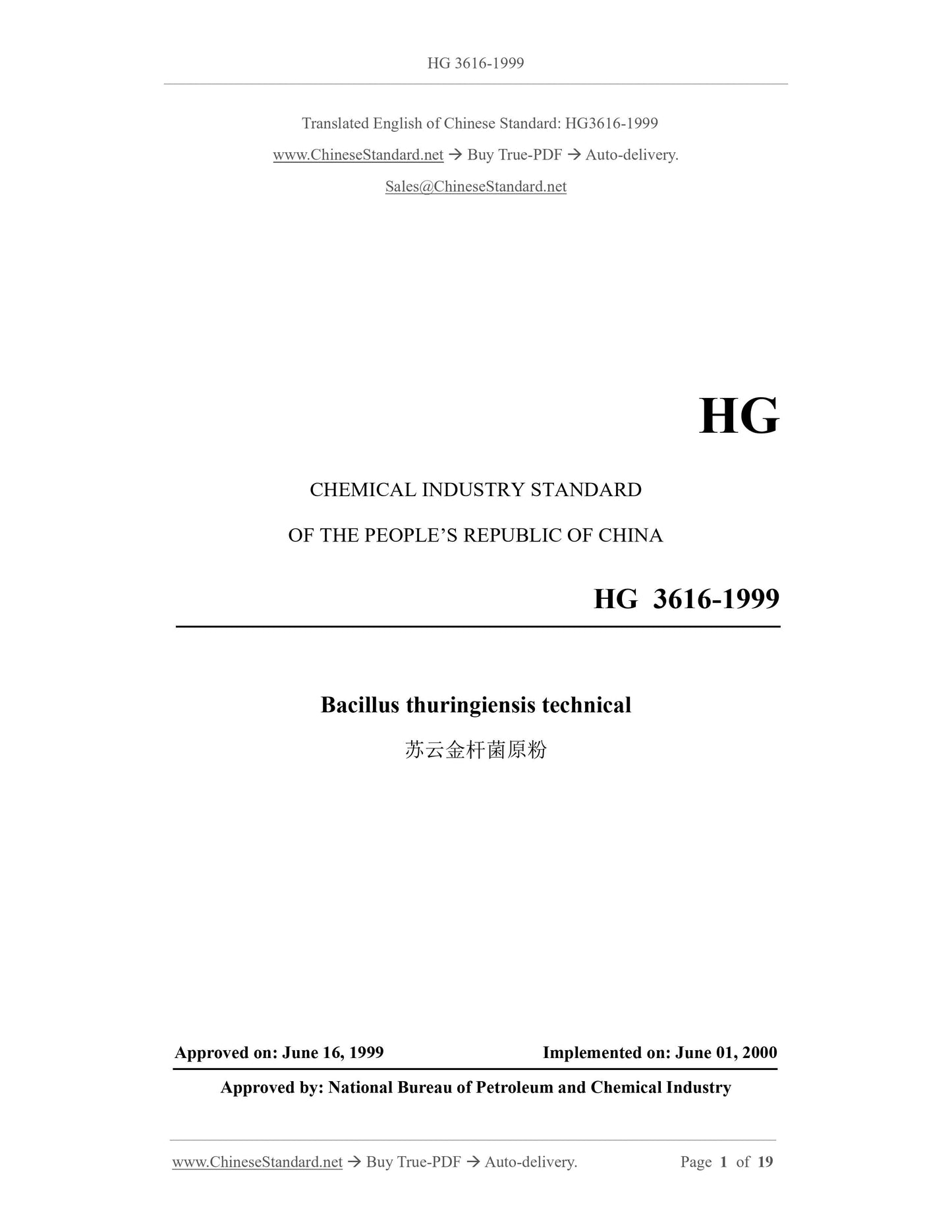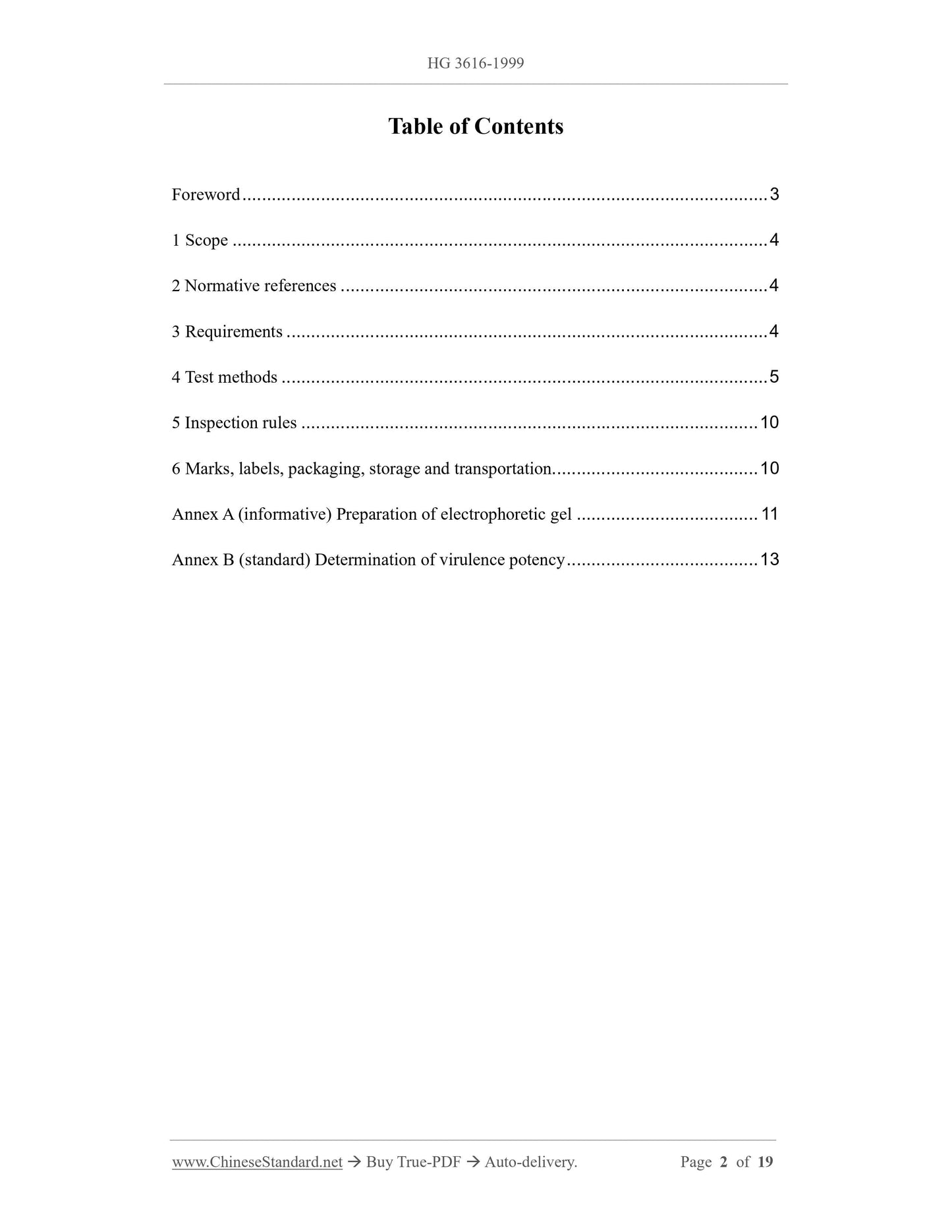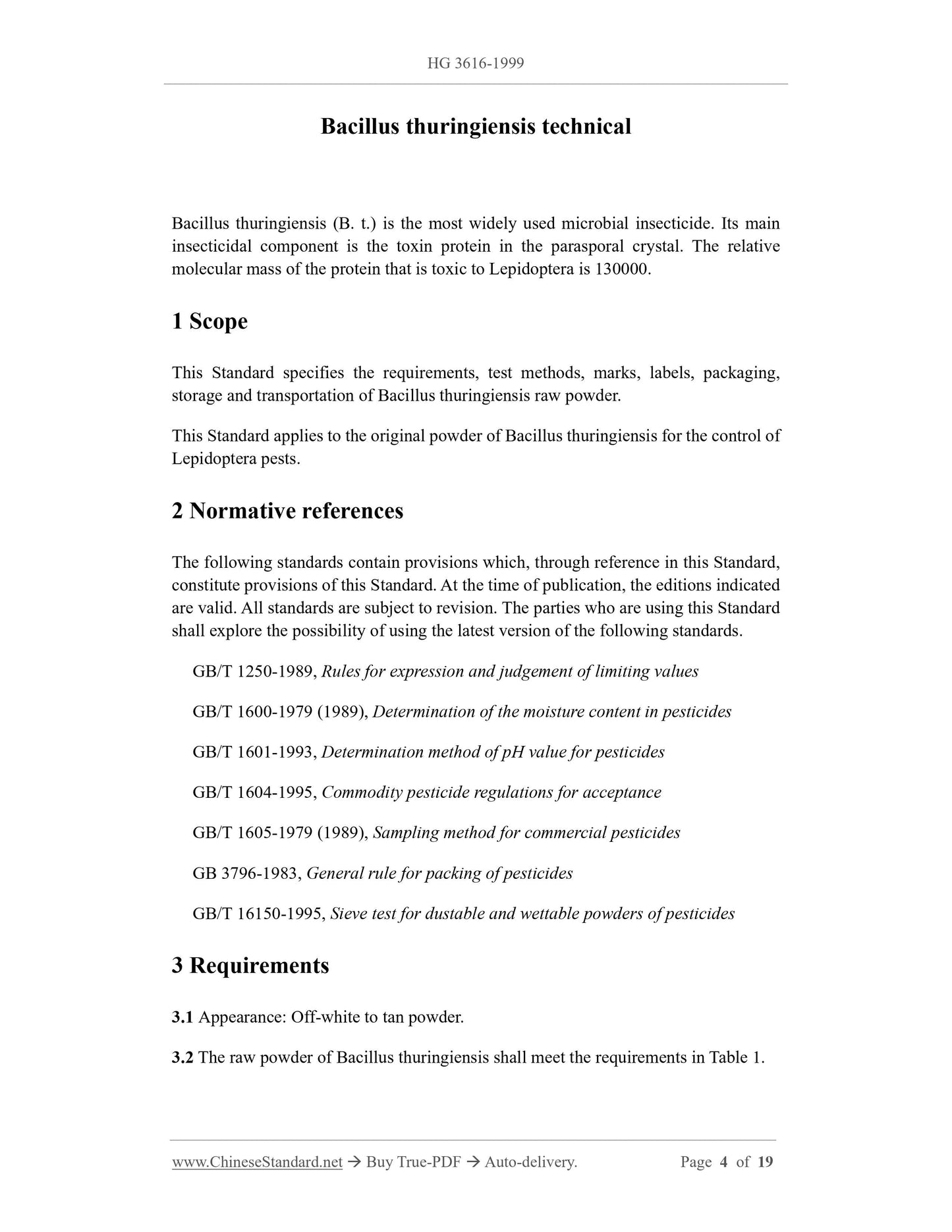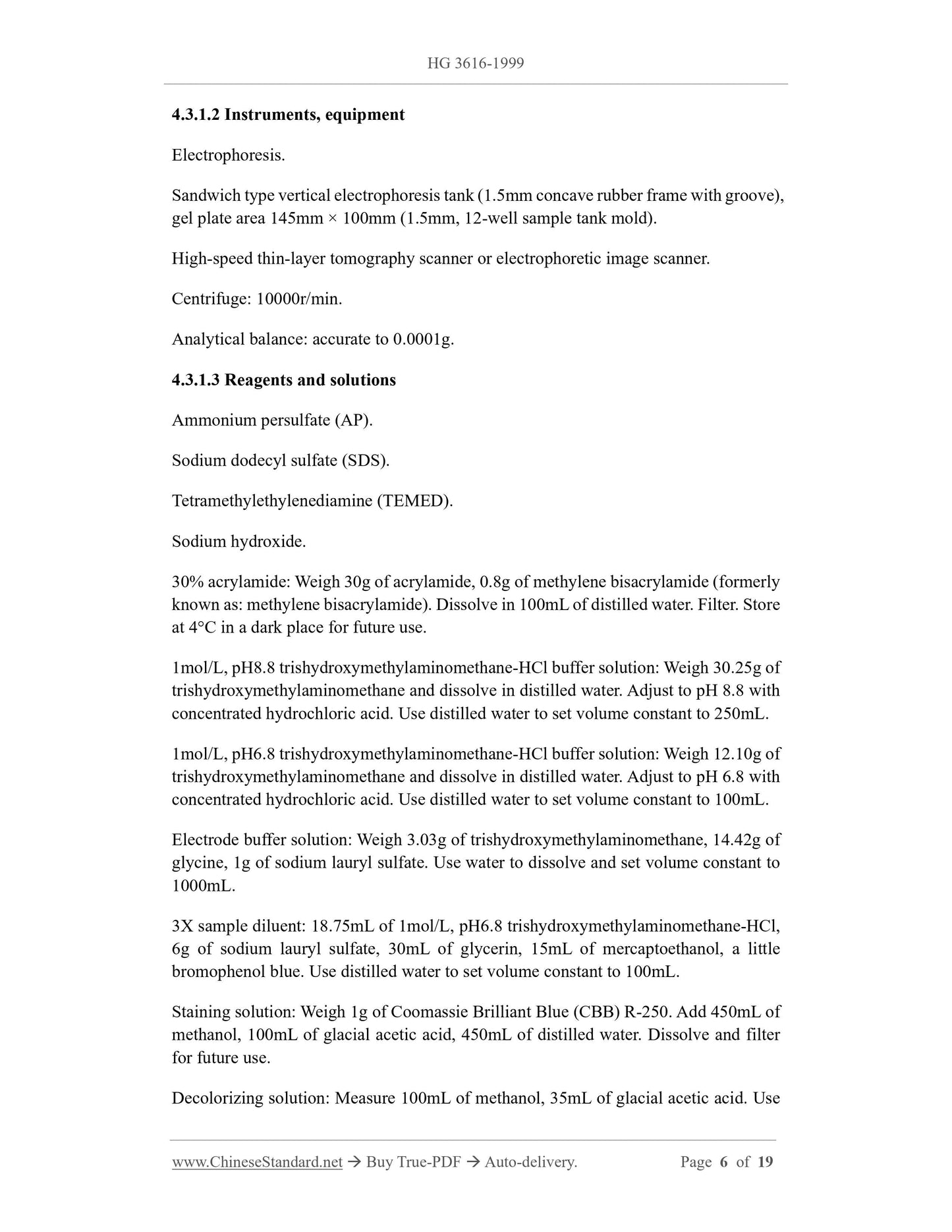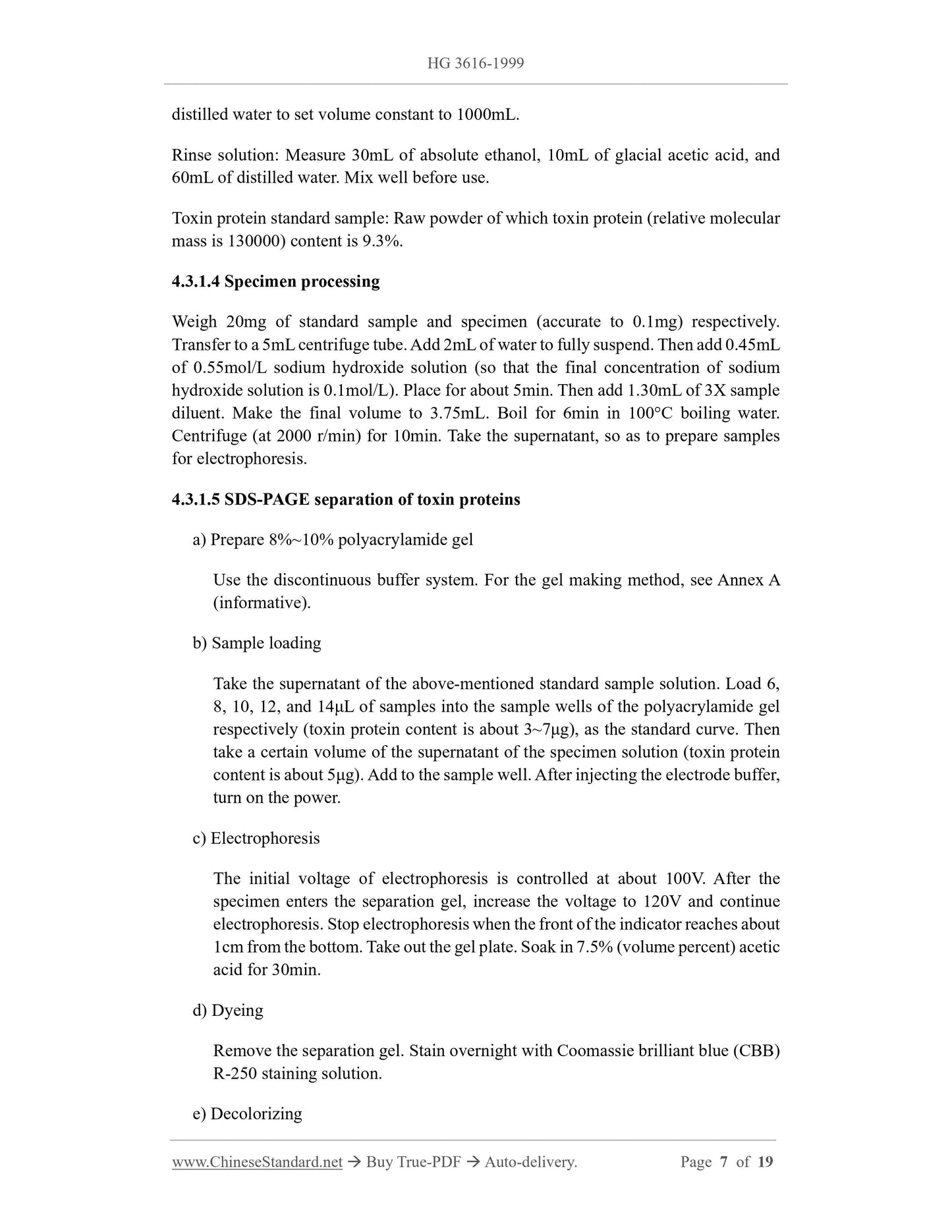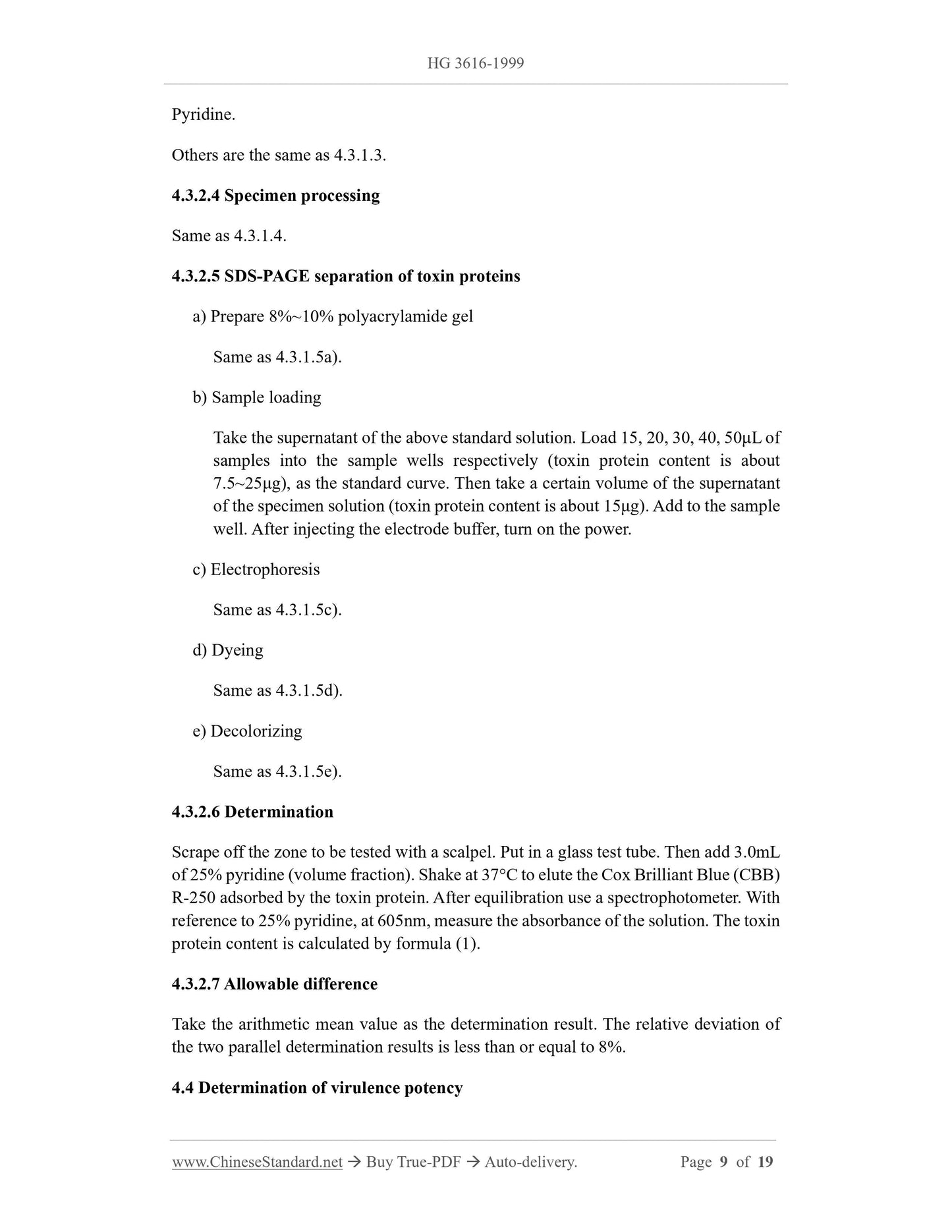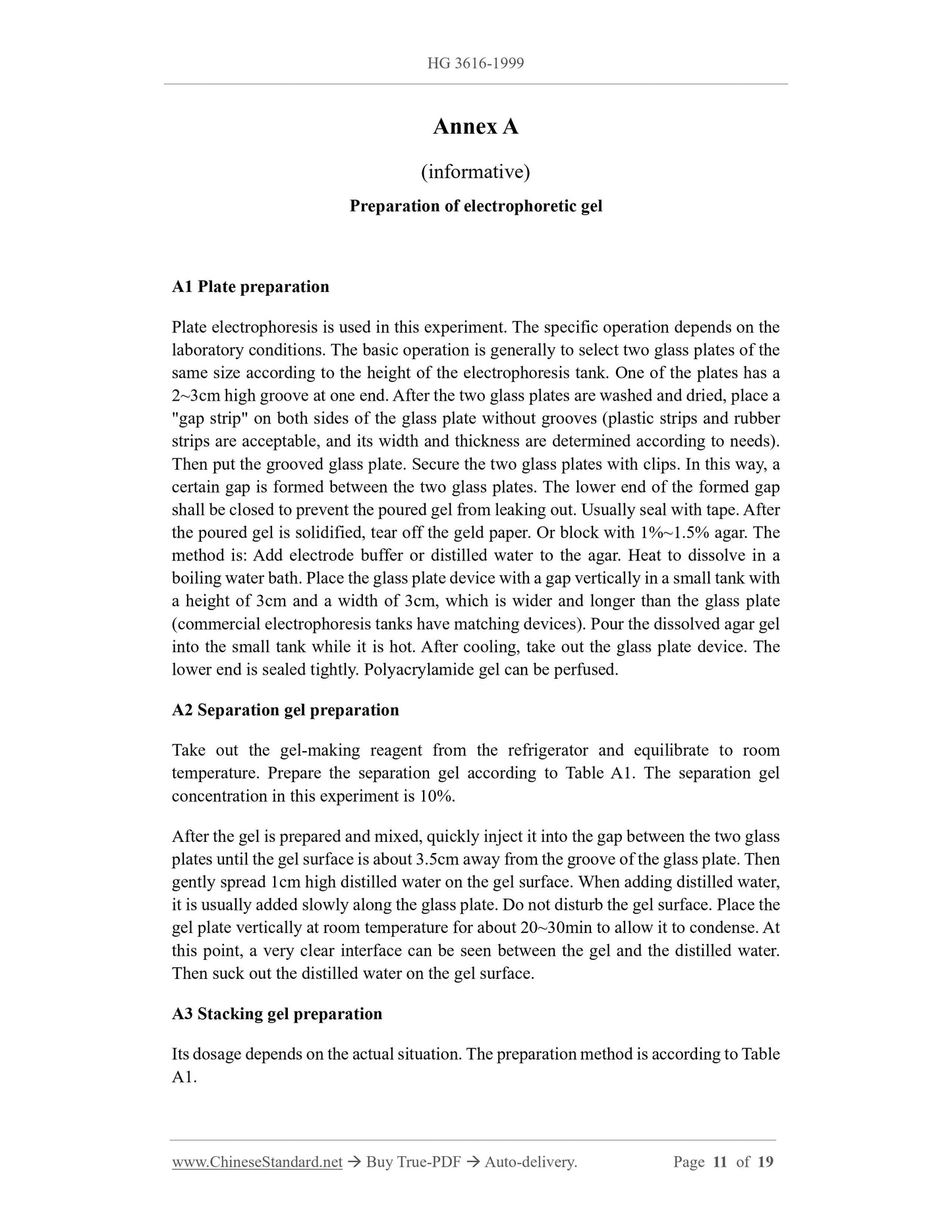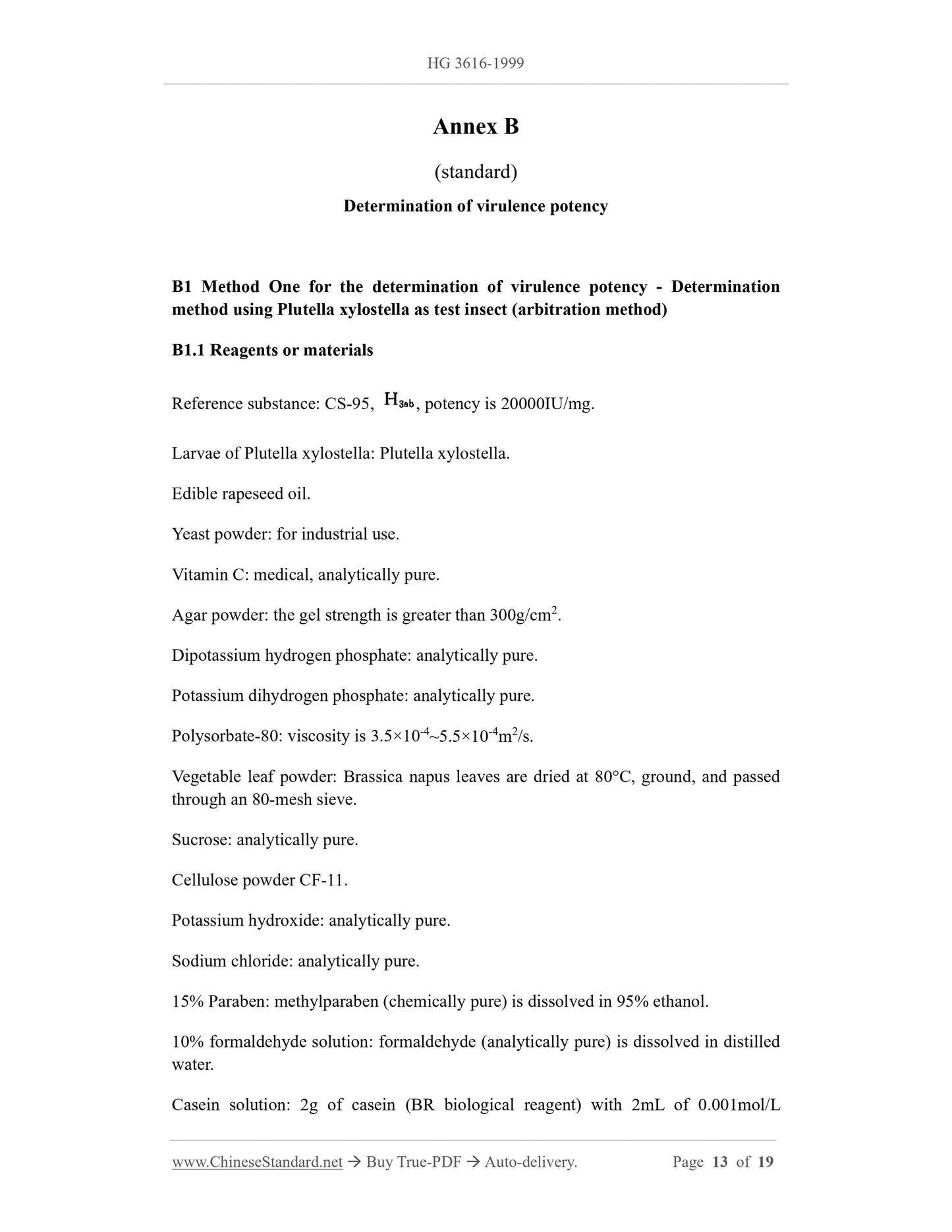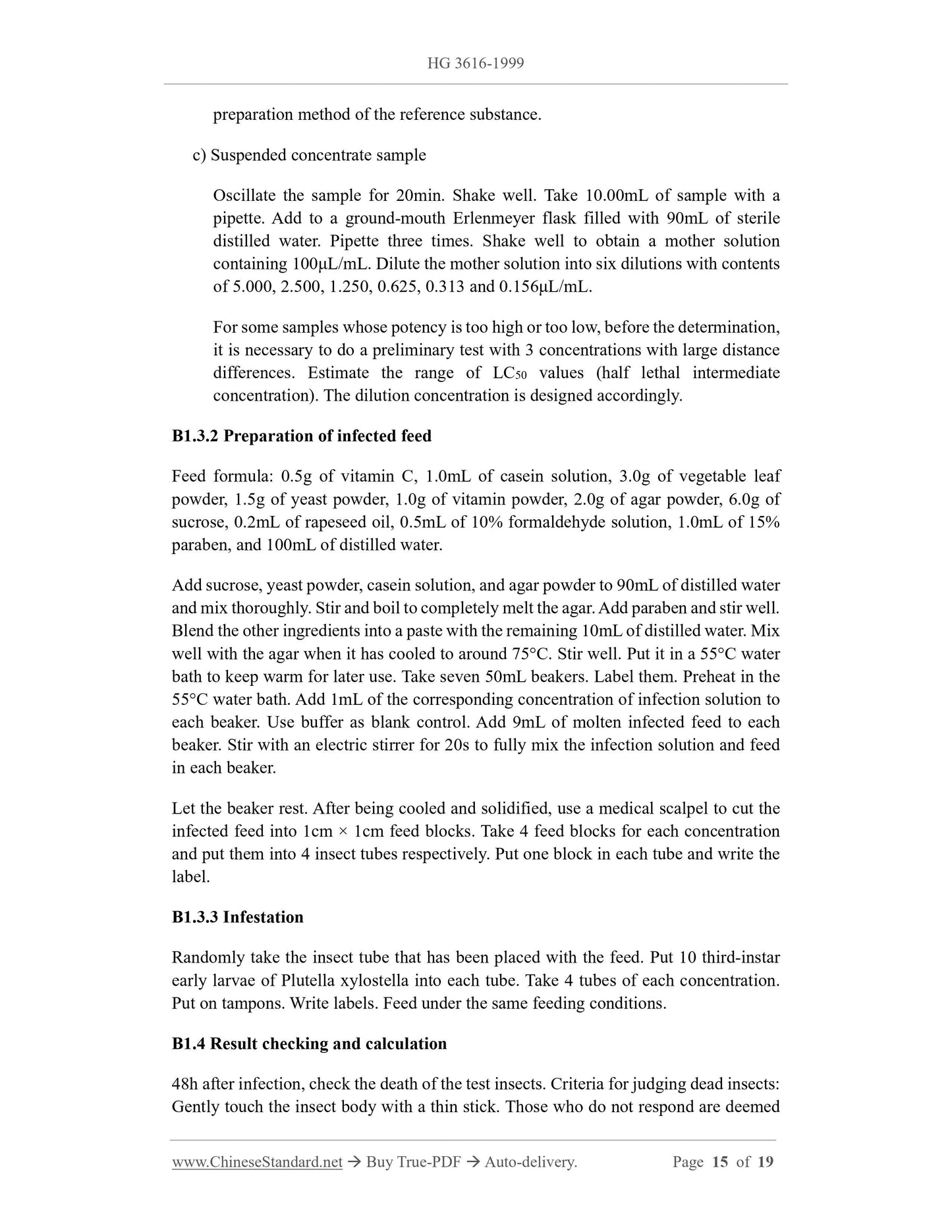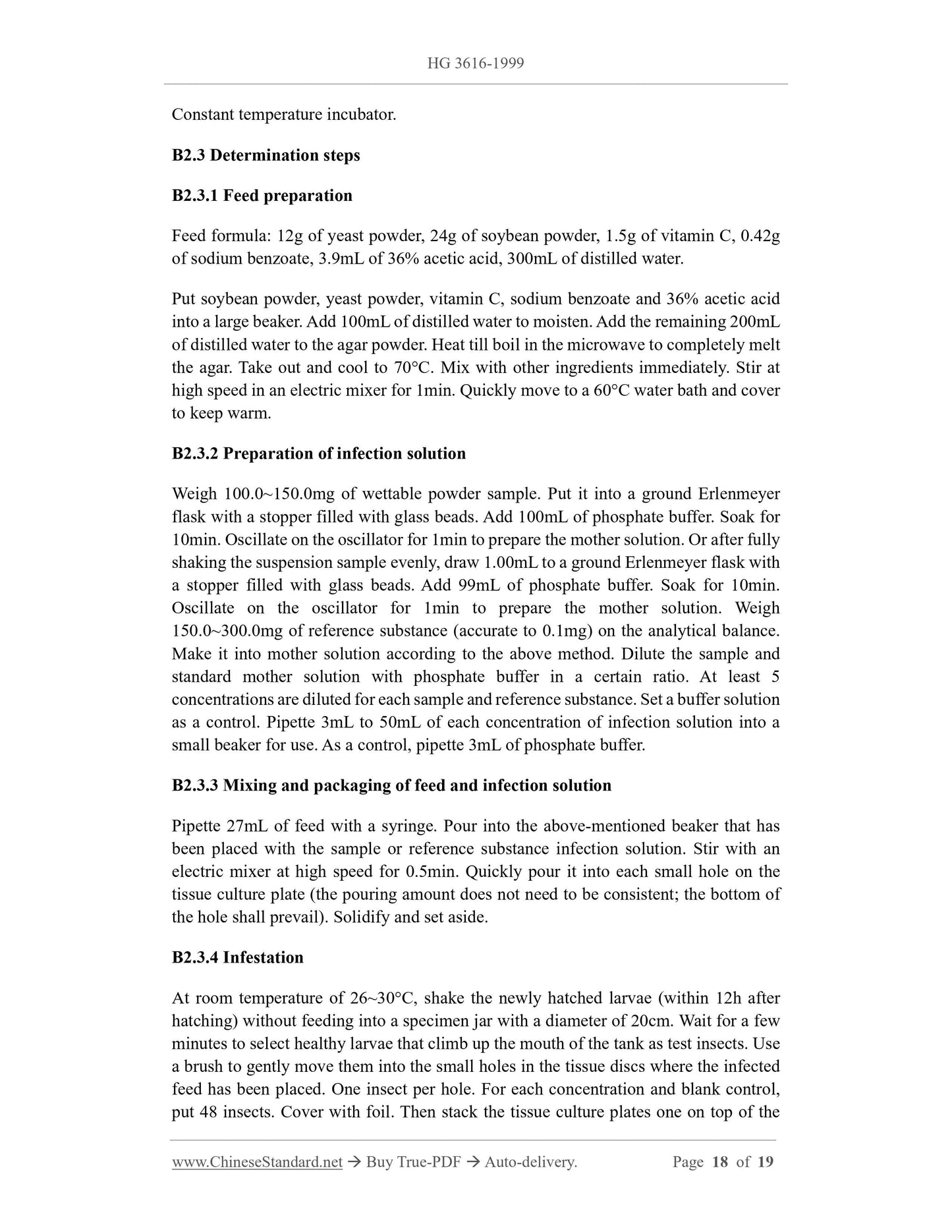1
/
of
10
www.ChineseStandard.us -- Field Test Asia Pte. Ltd.
HG 3616-1999 English PDF
HG 3616-1999 English PDF
Regular price
$200.00
Regular price
Sale price
$200.00
Unit price
/
per
Shipping calculated at checkout.
Couldn't load pickup availability
HG 3616-1999: [HG/T 3616-1999] Bacillus thuringiensis technical
Delivery: 9 seconds. Download (and Email) true-PDF + Invoice.Get Quotation: Click HG 3616-1999 (Self-service in 1-minute)
Newer / historical versions: HG 3616-1999
Preview True-PDF
Scope
This Standard specifies the requirements, test methods, marks, labels, packaging,storage and transportation of Bacillus thuringiensis raw powder.
This Standard applies to the original powder of Bacillus thuringiensis for the control of
Lepidoptera pests.
Basic Data
| Standard ID | HG 3616-1999 (HG3616-1999) |
| Description (Translated English) | [HG/T 3616-1999] Bacillus thuringiensis technical |
| Sector / Industry | Chemical Industry Standard |
| Classification of Chinese Standard | G25 |
| Classification of International Standard | 65.1 |
| Word Count Estimation | 12,117 |
| Date of Issue | 6/16/1999 |
| Date of Implementation | 6/1/2000 |
| Quoted Standard | GB/T 1250-1989; GB/T 1600-1979(1989); GB/T 1601-1993; GB/T 1604-1995; GB/T 1605-1979(1989); GB 3796-1983; GB/T 16150-1995 |
| Regulation (derived from) | Industry-Science (2010) No.77 |
| Summary | This standard specifies the original powder of Bacillus thuringiensis requirements, test methods and marking, labeling, packaging, storage and transportation. This standard applies to the control of lepidopteran pests of Bacillus thuringiensis original powder. |
Share
